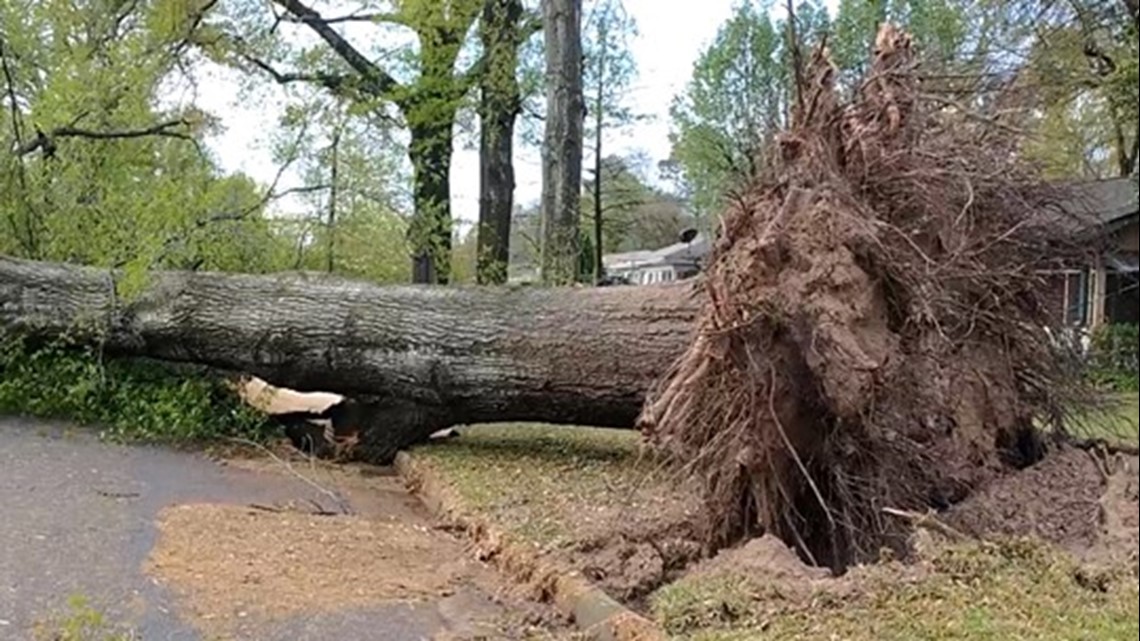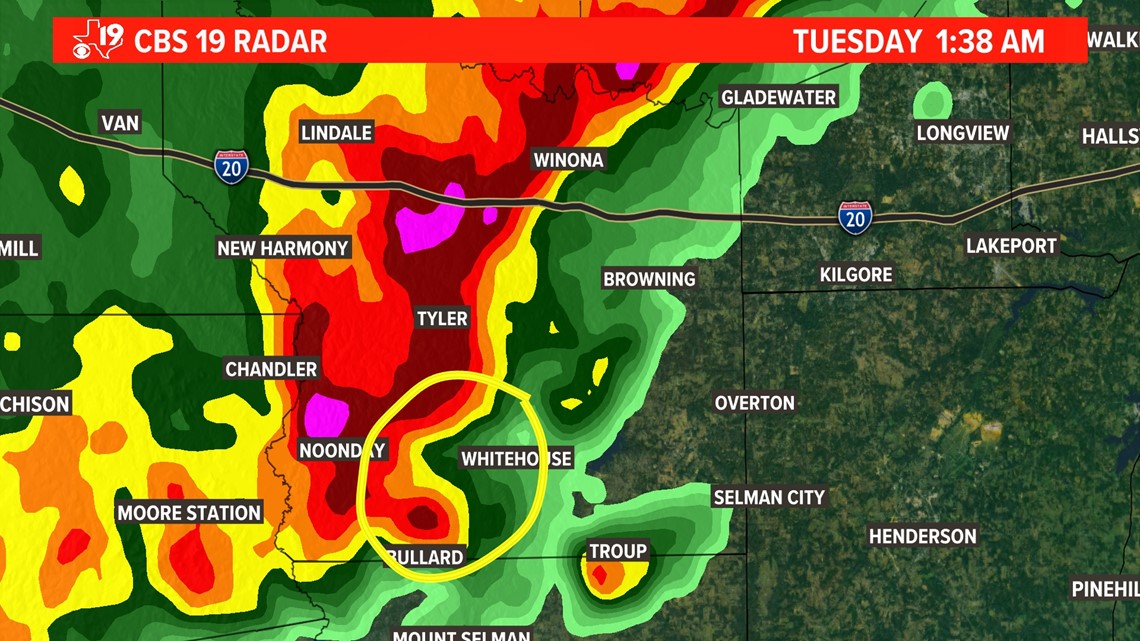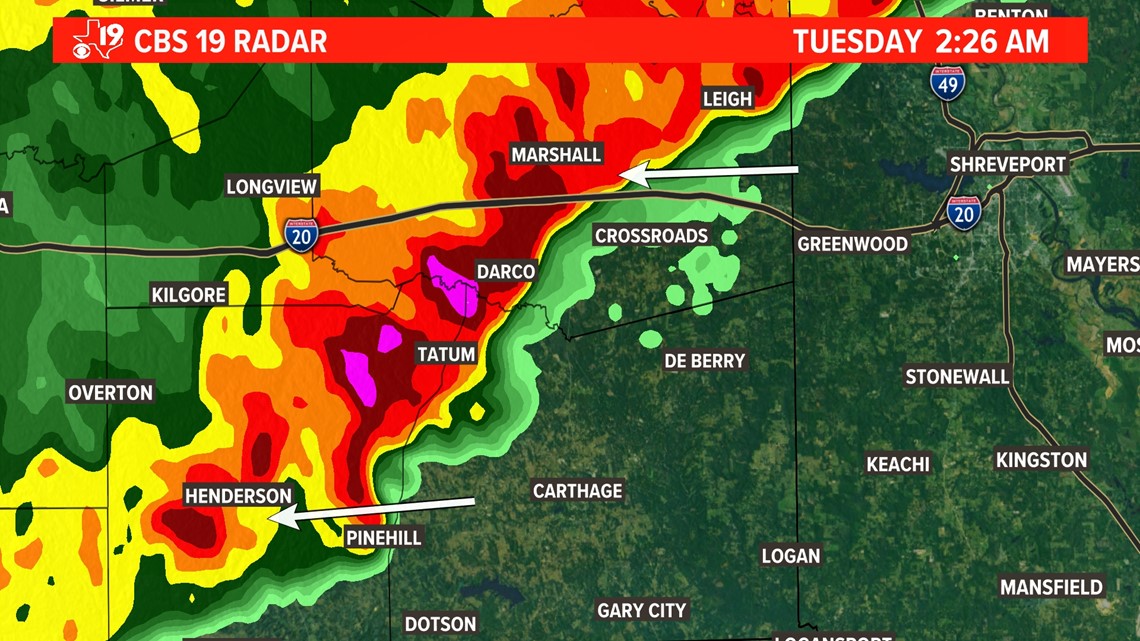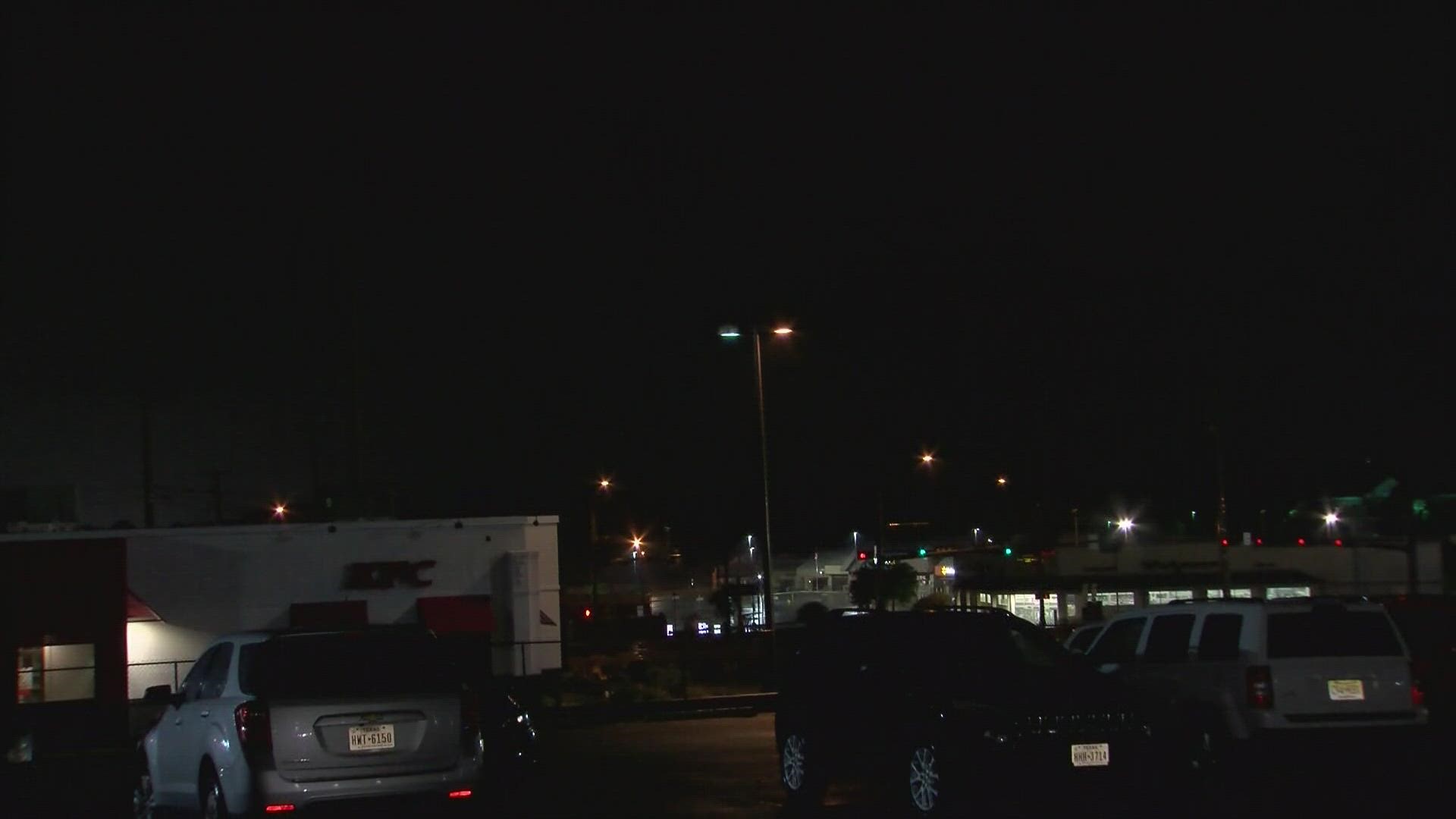TYLER, Texas — The National Weather Service will send survey teams to East Texas for the third week in a row today.
Another round severe weather blasted through our area late last night and early this morning. There are numerous reports of damage across the piney woods, including roofs torn off buildings; road signs knocked over along Loop 49; and trees uprooted.


What caused this damage?
Uprooted trees are often signs of tornadoes, but powerful straight-line winds associated with squall line thunderstorms can do damage equivalent to a low-end tornado. Squall lines begin as severe thunderstorm cells out ahead of a cold front. These cells form into a line of thunderstorms ahead of cold fronts.
During early stages of the squall strong downburst winds develop behind the squall line, causing a portion of the line to bow outward forming what we call a bow echo. Last night, it appears, a strong bow echo within the squall line developed in Van Zandt county and began to plow its way eastward.
Below is a radar snapshot from 1AM as the squall line was gaining strength and did some damage south of Canton.


Squall lines can move fast, sometimes up to 50 mph. Rear in-flow jet stream winds provide the motor to move the squall line. Sufficient wind shear or change of speed and wind direction with height helped to maintain the squall line and helped to create damaging downburst winds.
As the storm moved into Smith County, CBS19 radar sampled an 82 mph wind. The National Weather Service issued a Severe Thunderstorm Warning with a considerable tag to warn of possible damaging winds.


There are two kinds of squall lines:
- Progressive, which happen more often in summer are relatively shorter in duration and can cause damaging downburst winds.
- Serial squall lines, which last a lot longer than progressive squall lines. Line Echo Wave Patterns and Bow echoes form within the line.
These bow echoes can cause straight-line wind damage and quick spin up tornadoes, where heavy rainfall is also possible. Last night's squall line was likely a serial squall line. The line did damage as it moved across northern Rusk County, peeling off a few roofs and continuing to knock down trees. Here's the radar image as the squall line moved through Rusk county.


The bow echo began to lose its shape as it moved into Panola County. There were 17 reports of wind damage across East Texas. Survey crews will be looking for evidence of embedded tornadoes within the line.
Most squall line tornadoes don't last very long and create winds from 65 to 110 miles per hour. Most bow echoes create straight-line wind damage. Regardless of if it was a tornado or downburst, wind damage is still wind damage and East Texans are picking up after a damaging storm for the third week in a row.

